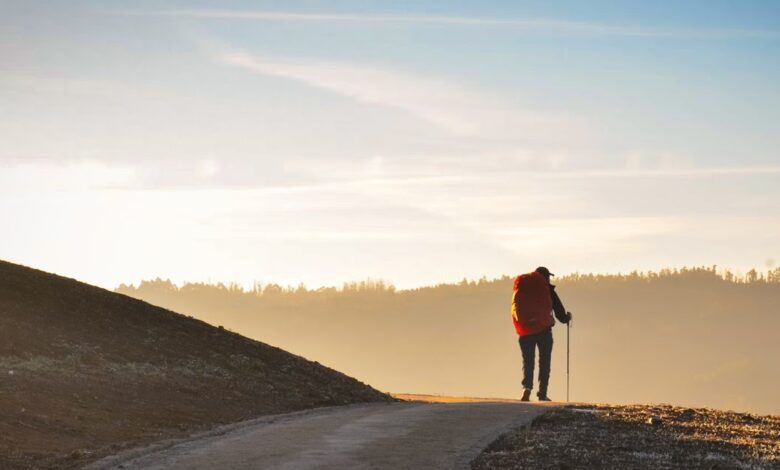Travel Guide to Experiencing the Camino de Santiago Pilgrimage

Photo: Jorge Luis Ojeda Flota
- Understanding the Camino de Santiago
Photo: Jon Tyson
The Camino has many routes catering to different preferences and abilities. Going on a Camino holiday needs careful route selection, as each path offers distinct landscapes, challenges, and cultural experiences. The Camino Francés (French Way) is the most popular route, featuring excellent infrastructure and social opportunities across its 500-mile journey from Saint-Jean-Pied-de-Port to Santiago. The Camino del Norte, following Spain’s northern coastline through the Basque Country, Cantabria, and Asturias, is ideal for those seeking coastal scenery and fewer crowds.
The Portuguese Way has a shorter alternative starting from Lisbon or Porto, while the Via de la Plata provides a challenging southern route through less-traveled parts of western Spain. First-time pilgrims often begin with the final 100 kilometers from Sarria to Santiago, which satisfies the Compostela requirement while providing an accessible introduction to the pilgrim experience.
- Immersing in Local Cultures and Traditions
The Camino’s cultural richness is seen through interactions with local communities, regional cuisines, and historical sites along the way. Pilgrim traditions are amazingly cultural, with many towns hosting pilgrim blessings and communal meals that create meaningful connections between travelers and residents. Culinary experiences vary across regions, from Navarra’s hearty stews to Galicia’s fresh seafood. Participating in local festivals adds another dimension to the journey, particularly in autumn when wine harvests and cultural celebrations enliven many towns along the routes.
Photo: Sergio Kian
- Preparing for the Journey
Physical preparation proves essential for enjoying the Camino experience. Most routes involve walking 12-15 miles daily for multiple weeks, often over challenging ground. A graduated training program focusing on long walks with a loaded backpack helps develop the necessary stamina. Equally important is mindful packing – the conventional wisdom suggests carrying no more than 10% of your body weight, focusing on moisture-wicking layers, quality footwear, and minimal essentials.
Accommodation options range from traditional pilgrim hostels (albergues) offering communal sleeping quarters for $8-15 per night to private guesthouses and rural hotels providing more comfort and privacy. While spontaneity is part of the Camino’s charm, securing accommodation ahead in popular areas during peak season (May-September) has become increasingly advisable.
Wrapping up….
https://blogger.googleusercontent.com/img/b/R29vZ2xl/AVvXsEjf6ipqLd9EFz4zwf5rkdp-eA8cuF91Zils-Ojj5XfBQEv16YwthxS39-vVlUGfr3GaiJoDLakCo0fEOv1jGxozcHLZld2C2Qhm10JORcTaFB2IYIg5o9wNtvfY_bLqlPWRbCAoAYNydhV0LZCqxt0GvkYPOb_pbAV6ZfWWCUYuE1O9RkHab4VAJ_a5rjUL/w1200-h630-p-k-no-nu/lizbreygel-camino-de-santiago-travel-guide-1.jpg
2025-05-13 12:27:00







